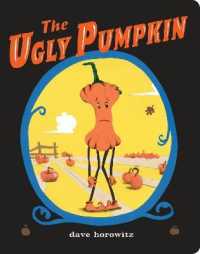- ホーム
- > 洋書
- > 英文書
- > Science / Mathematics
Full Description
Research shows that students learn best when they actively participate in their learning. In particular, hands-on activities provide the greatest opportunities for gaining understanding and promoting retention. Apart from simple manipulatives, the mathematics classroom offers few options for hands-on activities. However, the history of mathematics offers many ways to incorporate hands-on learning. By bringing this material culture of mathematics into the classroom, students can experience historical applications and uses of mathematics in a setting rich in discovery and intellectual interest. This volume is a compilation of articles from researchers and educators who use the history of mathematics to facilitate active learning in the classroom. The contributions range from simple devices, such as the rectangular protractor, to elaborate models of descriptive geometry. Other chapters provide detailed descriptions on how to build and use historical models in the high school or collegiate classroom.
Contents
Preface; Introduction; 1. Learning from the medieval master masonsgeometric journey through the labyrinth Hugh McCague; 2. Dem bones ain't dead: Napier's bones in the classroom Joanne Peeples; 3. The towers of Hanoi Amy Shell-Gellasch; 4. Rectangular protractors and the mathematics classroom Amy Ackerberg-Hastings; 5. Was Pythagoras Chinese? David E. Zitarelli; 6. Geometric string models of descriptive geometry Amy Shell-Gellasch and Bill Acheson; 7. The French curve Brian J. Lunday; 8. Area without integration: make your own planimeter Robert L. Foote and Ed Sandifer; 9. Historical mechanisms for drawing curves Daina Taimina; 10. Learning from the Roman land surveyors: a mathematical field exercise Hugh McCague; 11. Equating the sun: geometry, models, and practical computing in Greek astronomy James Evans; 12. Why is a square square and a cube cubical? Amy Shell-Gellasch; 13. The cycloid pendulum clock of Christiaan Huygens Katherine Inouye Lau and Kim Plofker; 14. Build a brachistochrone and captivate your class V. Frederick Rickey; 15. Exhibiting mathematical objects: making sense of your department's material culture Peggy Aldrich Kidwell and Amy Ackerberg-Hastings; About the authors.





